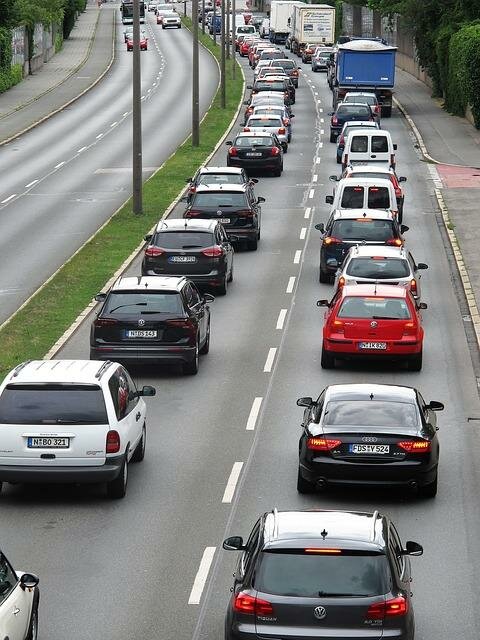UK Car Stopping Distances
Published Date: 7th Jun 2023
 UK stopping distances are a crucial aspect of road safety. These distances refer to the length of the road covered by a vehicle before coming to a complete halt, given a certain speed and road conditions.
UK stopping distances are a crucial aspect of road safety. These distances refer to the length of the road covered by a vehicle before coming to a complete halt, given a certain speed and road conditions.
The stopping distance comprises two distinct components, namely, thinking distance and braking distance. The former encompasses the distance travelled by car while the driver is still processing the requirement to apply brakes, which is typically contingent on a range of factors, including speed, attention, and fatigue. Conversely, the braking distance constitutes the distance the vehicle covers after the brakes have been applied until it reaches a complete halt. Furthermore, it is worth noting that the nature of the road, considering variables such as weather conditions, tarmac quality and the gradient of the road, will also play a pivotal role in determining the overall stopping distance.
Knowing the stopping distances for a vehicle under different situations can help drivers take necessary precautions and avoid accidents on the road.
READ THE LATEST NEW CAR NEWS HERE
Thinking Distance and Braking Distance.
Thinking distance is the distance a car travels between when the driver sees a hazard and when they react by applying the brakes. The thinking distance is typically around 1 second, but it can be longer if the driver is distracted or tired.
The braking distance is the measured distance that a vehicle travels after the brakes have been applied. This distance is influenced by various factors, including the surface of the road, tyre type, and weight of the vehicle.
The complete stopping distance of a vehicle is the sum of both the reaction and braking distances. It refers to the distance that a car travels before coming to a complete stop.
Prescribed stopping distances:
The following table shows the prescribed stopping distances for cars in the UK at different speeds:

The following table also shows the Reaction, Braking Distance and the prescribed stopping distances for cars in the UK at different speeds:

Why are UK car stopping distances important?
In the UK, stopping distances are critical for driver safety. It's important to recognize that these distances can be subject to several factors, from weather conditions to vehicle speed and the tire's integrity. Drivers who have a grip on their vehicle's stopping distance can be better prepared to act in emergencies and avoid road mishaps.
How can UK car stopping distances be improved?
UK car stopping distances can be improved by a number of factors, including:
 Driving at a safe speed is of utmost importance. It is crucial to remember that the faster a car moves, the longer the stopping distance is required.
Driving at a safe speed is of utmost importance. It is crucial to remember that the faster a car moves, the longer the stopping distance is required.- Drivers must remain attentive to their surroundings and poised to react to potential hazards on the road.
- It is imperative to maintain your automobile's optimal condition. This includes checking your tyre pressure regularly and ensuring your brakes function correctly.
- Awareness of road conditions is crucial. Wet roads, snow, and ice all contribute to longer stopping distances.
Summary
Stopping distances of UK cars are a critical aspect of road safety. By comprehending the distance it takes for your vehicle to come to a complete halt, you can adequately prepare to react to hazards and evade accidents.
Additional tips for safe driving
In addition to being aware of UK car stopping distances, there are a number of other things you can do to drive safely. These include:
- Obey the speed limit.
- Don't drink and drive.
- Don't text and drive.
- Wear your seatbelt.
- Be aware of your surroundings.
- Be prepared to react to hazards.
By adhering to these guidelines, you can enhance road safety for yourself and fellow commuters.
- UK car stopping distances are the distances a vehicle will travel before coming to a complete stop, given a certain speed and road conditions.
- The stopping distance comprises two components: the thinking distance and the braking distance.
- The thinking distance is the distance a car travels between when the driver sees a hazard and when they react by applying the brakes.
- The brake distance refers to the distance that a vehicle travels after its brakes have been engaged, until it comes to a complete halt.
- The overall stopping distance is the sum of both the reaction and braking distance, an important concept to remember for driving-related safety.
- Drivers can improve their stopping distances by driving safely, paying attention to the road, keeping their cars in good condition, and being aware of the road conditions.
Discover your perfect car with the guidance of our team of expert sales professionals. From start to finish, we'll work with you to find the ideal vehicle to match your needs. Contact UK Car Discount today and explore our wide selection of premier vehicles.
Call us today at 0161 946 3500 to discuss how we can guide you with your Next New Car.
READ THE LATEST NEW CAR NEWS HERE
